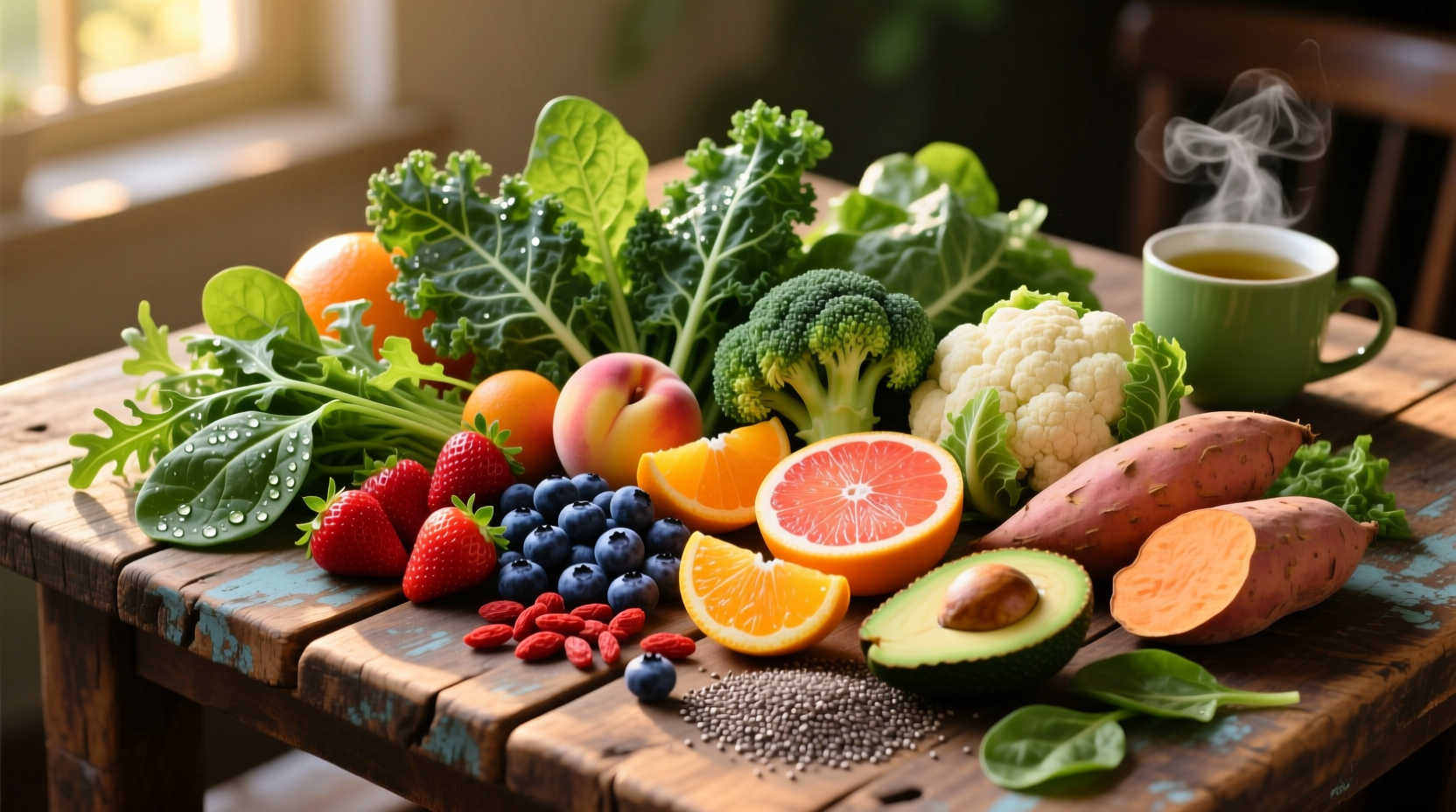Confused about what foods actually deliver real health benefits amidst conflicting nutrition advice? You're not alone. With endless fad diets and contradictory information online, identifying truly beneficial foods has become overwhelming. This guide cuts through the noise with science-backed answers about which foods deliver measurable health advantages and how to incorporate them effectively into your daily eating pattern.
The Science Behind Nutrient-Density
Not all calories are created equal. Nutrient-dense foods provide maximum vitamins, minerals, fiber, and beneficial compounds per calorie. Researchers evaluate foods based on their ANDI (Aggregate Nutrient Density Index) scores, which measure micronutrient richness. Foods scoring highest typically include dark leafy greens, colorful vegetables, and certain fruits that deliver exceptional nutritional value without excess calories.
| Food Category | Top Nutrients | Primary Health Benefits | Recommended Serving |
|---|---|---|---|
| Leafy Greens (kale, spinach) | Vitamins K, A, C, folate, iron | Heart health, bone strength, vision | 2 cups raw or 1 cup cooked daily |
| Berries (blueberries, strawberries) | Antioxidants, vitamin C, fiber | Brain function, inflammation reduction | 1 cup fresh or frozen, 3-4 times weekly |
| Fatty Fish (salmon, mackerel) | Omega-3s, protein, vitamin D | Heart health, brain function, inflammation | 3.5 oz servings, 2 times weekly |
| Legumes (beans, lentils) | Fiber, plant protein, iron, folate | Digestive health, blood sugar control | 1/2 cup cooked, daily |
Evolution of Nutritional Science
Nutritional understanding has evolved significantly over the past century. In the 1920s, scientists identified vitamins and their deficiency diseases. The 1950s brought recognition of heart-healthy fats versus harmful trans fats. Modern research focuses on food synergy—how compounds work together for greater benefit than isolated nutrients. The 2020-2025 Dietary Guidelines for Americans now emphasize whole food patterns rather than single nutrients, reflecting this more sophisticated understanding of what foods contribute to long-term health.
Top Food Categories for Optimal Health
Leafy Greens and Cruciferous Vegetables
Dark leafy greens like spinach, kale, and Swiss chard rank among the most nutrient-dense foods available. Cruciferous vegetables including broccoli, cauliflower, and Brussels sprouts contain sulforaphane, a compound shown to support cellular health. Research from the National Institutes of Health indicates regular consumption of these vegetables correlates with reduced risk of cardiovascular disease and certain cancers. For maximum nutrient absorption, pair with healthy fats like olive oil or avocado.
Berries and Colorful Fruits
Berries consistently score highest for antioxidant capacity among fruits. Blueberries, strawberries, and blackberries contain anthocyanins that protect against oxidative stress. According to a 2022 study published in The American Journal of Clinical Nutrition, consuming berries three or more times weekly was associated with slower cognitive decline in older adults. For what foods help with inflammation, berries should be your first choice due to their potent anti-inflammatory compounds.
Fatty Fish and Omega-3 Sources
Fatty fish like salmon, mackerel, and sardines provide EPA and DHA omega-3 fatty acids that support heart and brain health. The American Heart Association recommends two 3.5-ounce servings weekly for cardiovascular benefits. For plant-based omega-3s, walnuts and flaxseeds offer ALA, though conversion to active forms is limited. When considering what foods are good for heart health, fatty fish consistently ranks at the top of evidence-based recommendations.

Practical Implementation Strategies
Knowing what foods provide health benefits means little without practical ways to incorporate them. Start with these evidence-based approaches:
- Batch preparation: Cook large batches of quinoa, beans, or roasted vegetables on weekends for easy weekday meals
- Strategic substitutions: Replace half the meat in recipes with mushrooms or lentils for added nutrients
- Smart snacking: Keep pre-portioned nuts, seeds, or vegetable sticks with hummus readily available
- Flavor layering: Build meals with multiple colorful vegetables to maximize phytonutrient variety
Contextual Considerations and Limitations
While certain foods deliver exceptional benefits for most people, individual factors matter significantly. Those with kidney disease may need to limit potassium-rich foods like spinach and bananas. People on blood thinners should maintain consistent vitamin K intake rather than eliminating leafy greens. Individuals with histamine intolerance might react poorly to fermented foods like sauerkraut that benefit others. Always consider your unique health circumstances when determining what foods are most appropriate for your personal needs.
Avoiding Common Nutritional Pitfalls
Many assume that simply adding "healthy" foods guarantees benefits, but context matters. Consuming antioxidant-rich berries in sugary cereals negates potential advantages. Pairing iron-rich spinach with calcium-rich dairy inhibits absorption. Understanding food combinations significantly impacts what foods actually deliver measurable health outcomes. For those asking what foods help with inflammation, consider both beneficial additions and inflammatory triggers to eliminate.











 浙公网安备
33010002000092号
浙公网安备
33010002000092号 浙B2-20120091-4
浙B2-20120091-4